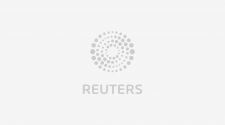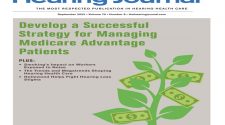According to a March survey conducted by the Institute for Supply Chain Management, nearly 75% of U.S. companies reported supply chain disruptions due to coronavirus-related issues.
Before the pandemic, supply chain resiliency in most industries hadn’t been seriously tested, at least not to the extent that it has recently. Today, the definition of supply chain resiliency has morphed dramatically to include geographic diversification, visibility, and surplus capacity for everything from raw materials to finished goods.
What organizations needed at the pandemic inception—and will continue to need—is a reliable way to predict Covid-19 cases as well as their current supply levels, product burn rates, and sourcing challenges.
With the right technology and data, this is possible. Here are four ways technology can help organizations build a stronger, more proactive supply chain.
- Drive Comprehensive Supply Chain Visibility
Recent decades have seen significant growth in global trade and a resulting rise in complex supply chains. Few organizations likely evaluate the web of manufacturers, distributors, and other logistics professionals who are all accountable for making the final transaction a reality.
Yet 68% of product disruptions are a result of poor demand signaling. Amid this landscape, a fundamental element of supply chain success is access to accurate data and transparency into the totality of the supply chain.
In the health care supply chain, for example, the early 2020 demand spike—coupled with export bans from countries that supply more than 80% of the raw material that goes into personal protective equipment (PPE)—led to widespread shortages. In many hotspots, supplies dwindled from two weeks’ worth of PPE in February to just a few days’ worth of inventory by March.
Real-time data on the total supply chain enables organizations to accurately identify their intersection of demand and supply, more effectively and sustainably secure product, and better ascertain potential risks with suppliers. Using a trusted supply-chain analytics platform delivers the reliable and precise data necessary for organizations to identify areas of product vulnerability and introduce safeguards—whether they’re enduring small disruptions or pandemics.
- Effectively Manage a Complex Supplier Network
Alongside a large multifaceted corporation exist thousands of vendors working across multiple sites and regions—providing supplies and supporting operations. As one example, an integrated health care system master vendor list can include upward of 6,000 distinct organizations.
Understandably, many organizations aren’t resourced to manage thousands of suppliers and their associated contracts, or to proactively track services performed as well as timely invoicing and payment.
To better manage these vendors and mitigate risk, organizations need a holistic strategy in third-party services. A sophisticated solution is a procurement platform that leverages real-time data to more accurately manage vendor contracts, provide services verification, automate invoicing and payments, and manage supply chain costs all in one place. This integrated and automated solution is a critical, yet often missing, link in controlling overall organizational spend and enabling efficient operations.
- Pinpoint and Engage Diverse Supply Chain Partners
Supplier diversity took on an entirely new meaning in 2020. Recent surveys show most consumers want to support small community businesses, and diverse suppliers fill an important gap in the supply chain.
Their size and agility allow them to turn projects around with quick deadlines while also providing value-added services and products on a regular basis. In health care, supplier diversity is a fundamental component that improves inclusiveness and equity, builds trust between patients and providers, and improves health outcomes.
But even as diverse suppliers are addressing some of today’s most significant issues, it can often be difficult for organizations to differentiate diverse spend and identify qualified diverse suppliers.
To solve for this, organizations can use third-party services’ optimization technology that implements diversity analytics—allowing measurement of diverse supplier spending, and evaluation and activation of new contracts, from one platform. This technology empowers faster contracting with diverse partners, improved purchasing transparency, and, ultimately, more equitable business practices.
- Leverage Technology as an Early Warning System
Covid-19 created soaring product demand across industries—from toilet paper to laptops, flour, and hand sanitizer. For health care providers, surge demand for PPE and other vital medical supplies and drugs was particularly troubling.
Until recently, hospitals have been largely on their own in translating local Covid-19 surges into immediately meaningful information regarding capacity and supplies. But now, providers are using technology to be better informed about how rapidly virus cases are spreading and about their required supplies at any given point in a disease’s progression.
This new technology is leveraging automated, real-time surveillance capabilities—providing early warnings, forecasting surges, and helping organizations plan coordinated responses and resources where they’re needed most.
When local health care providers can predict Covid-19 hospitalizations, this creates a positive ripple effect—relieving strain on cross-industry supply chains, ensuring more responsive care across communities, and helping keep businesses and schools open and running.
Strengthen Your Supply Chain
With a technology-enabled supply chain, organizations can better allocate critical products and supplies while saving money, time, and―in some cases―lives.
For more than two decades, Premier’s robust technology platform and supply chain expertise have provided a trusted connection point for our members, suppliers, manufacturers, distributors, and the U.S. government. Our data-driven, evidence-based purchasing practices enable supply chain sustainability and access to the high-quality products organizations need now and in the future.
Learn more about how Premier’s technology-enabled supply chain can work for you.


















